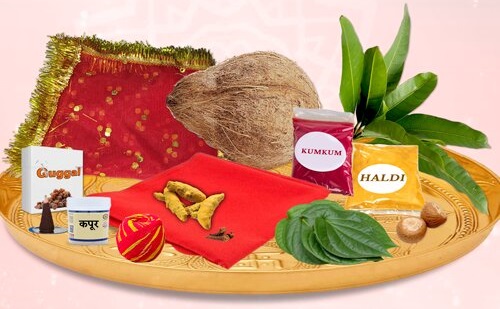This-Day 3 May 2024 Friday
This-Day 3 May Sam Vikram: Purnimanta Mass: Vaisakha Paksha: Tithi: Krishna Paksha Dashami – May 03 01:53 AM – May 03 11:24 PM, let us have a quick look of the events and anniversaries of India and the world
 Panchang /
Panchang /
Shaka Samvat: 1946
Purnimanta: Vaisakha
Tithi: Krishna Paksha Dashami – May 03 01:53 AM – May 03 11:24 PM
This-Day
Festivals Today:
Festials Tomorrow: Varuthinee Brahmaand, Vallabhaachaary Jayantee
Day Today: World Press Freedom Day (UNESCO 26 C/Resolution 4.3)
Day Tomorrow:
Yoga:
Brahma – May 02 05:19 PM – May 03 02:18 PM
Indra – May 03 02:18 PM – May 04 11:03 AM
Karana:
Vanija – May 03 01:53 AM – May 03 12:41 PM
Vishti – May 03 12:41 PM – May 03 11:24 PM
Bava – May 03 11:24 PM – May 04 10:03 AM”
Sunrise: 5:42
Sunset: 18:53
Moonrise: 2:27
Moonset: 13:51
 Auspicious Time
Auspicious Time
Abhijit Muhurat – 11:51 AM – 12:44 PM
Amrit Kaal – 05:24 PM – 06:53 PM
Brahma Muhurat – 04:05 AM – 04:53 AM
![]() Inauspicious Time
Inauspicious Time
Rahu – 10:39 AM – 12:17 PM
Yamaganda – 3:35 PM – 5:14 PM
Gulika – 7:21 AM – 9:00 AM
Dur Muhurat – 08:20 AM – 09:13 AM, 12:44 PM – 01:36 PM
Varjyam – 08:30 AM – 09:59 AM
Information Source: https://www.prokerala.com/
Today / आज
Independence Fighters sacrificed- At Least: 20
Major Historical Events
End of Anglo-Mysore Wars (May 3, 1799):
-
- Date: May 3, 1799
- Event: The East India Company captured Seringapatam, marking the conclusion of the Anglo-Mysore Wars.
- Significance: Tipu Sultan of Mysore was killed during the siege, leading to the end of his reign and the annexation of Mysore by the British. This event reshaped the geopolitical landscape of South India, establishing British dominance in the region.
Maratha Ruler Shahu II – End of Reign and Death (May 3, 1808):
-
- Date: May 3, 1808
- Event: Maratha ruler Shahu II passed away, marking the end of his reign.
- Significance: Shahu II’s death not only ended his rule but also had implications for the Maratha Empire. It potentially led to power struggles and shifts in Maratha politics, affecting the stability of the region during a crucial period of Indian history.
2023 Manipur Violence – Ethnic Conflict (May 3, 2023):
-
- Date: May 3, 2023
- Event: Ethnic tensions in Manipur, India, escalated into violence resulting in casualties.
- Significance: The outbreak of violence highlighted the ongoing ethnic conflicts and tensions in Manipur, underscoring the challenges of communal harmony and peace-building efforts in the region. The high number of casualties emphasized the urgency of addressing underlying grievances and promoting reconciliation initiatives.
History in Brief This-Day
Formation of the All India Forward Bloc: Subhash Chandra Bose formed the All India Forward Bloc on May 3, 1939.
Dust Storms in India – Natural Disaster: On May 3, 2018, the Indian government reported that approximately 110 people had died in dust storms in Rajasthan and Uttar Pradesh over the past nine days.
Military Aircraft Crash in India – Tragic Incident: A MiG-21 military aircraft crashed into the Bank of Rajasthan in India on May 3, 2002, resulting in eight fatalities.
Anniversaries This-Day
Sujatha Rangarajan – Eminent Writer: Sujatha Rangarajan, a renowned writer and screenwriter, was born on May 3, 1935, in Srirangam.
Aruna Irani – Renowned Actress: Indian actress Aruna Irani was born on May 3, 1952.
Cyclone Fani – Major Cyclone Event: Cyclone Fani hit Odisha State, India, and Bangladesh on May 3, 2019, killing 33 people after a massive evacuation effort involving 1.2 million people.
V K Krishna Menon – Indian Statesman: V K Krishna Menon, an influential Indian academic, politician, and Defense Minister from 1957 to 1962, was born on May 3, 1896, in Kozhikode, Kerala, India.
Sugar Ray Robinson – Boxing Legend: Celebrated boxer Sugar Ray Robinson, known as one of the all-time greats, was born on May 3, 1921, in Ailey, Georgia, USA.
Kamal Rani Varun – Indian Politician: Politician Kamal Rani Varun was born on May 3, 1958, in Lucknow, Uttar Pradesh, India.
Neena Kurup – Indian Actress: Actress Neena Kurup was born on May 3, 1967, in Calicut, Kerala, India.
Nargis Dutt – Legendary Actress: Celebrated actress Nargis Dutt passed away on May 3, 1981.
Pooja Chopra – Indian Actress: Pooja Chopra, an Indian actress, was born on May 3, 1985, in Kolkata, West Bengal, India.
Meghana Raj – Indian Actress: Actress Meghana Raj was born on May 3, 1990, in Bengaluru, Karnataka, India.
Megha Chakraborty – Indian Actress: Actress Megha Chakraborty was born on May 3, 1991, in Kolkata, India.
Domantas Sabonis – Basketball Star: NBA player Domantas Sabonis was born on May 3, 1996, in Portland, Oregon, USA.
Tyronn Lue – NBA Personality: Tyronn Lue, a well-known basketball player and coach, was born on May 3, 1977, in Mexico, Missouri, USA.
Katinka Hosszu – Swimming Champion: Hungarian swimmer Katinka Hosszu was born on May 3, 1989.
Brooks Koepka and Meghana Raj – Sporting and Acting Talents: Golfer Brooks Koepka and actress Meghana Raj were both born on May 3, 1990, in West Palm Beach, Florida, USA, and Bengaluru, Karnataka, India, respectively.
Dwayne Haskins – American Football Player: NFL player Dwayne Haskins was born on May 3, 1997, in Highland Park, New Jersey, USA.
Online Resources
https://pib.gov.in/amritmahotsav/dictionary_book.aspx

I seriously love your blog.. Pleasant colors & theme. Did
you make this web site yourself? Please reply back as I’m planning to create my own personal website and would like to learn where you got this
from or just what the theme is named. Thanks!
Iseriously love your blog.. Pleasant colors & theme.Did you make this web site yourself?
Please reply back as I’m planning to create my own personal website and
woud like to learn where you got this from or just what the theme is named.
Thanks!